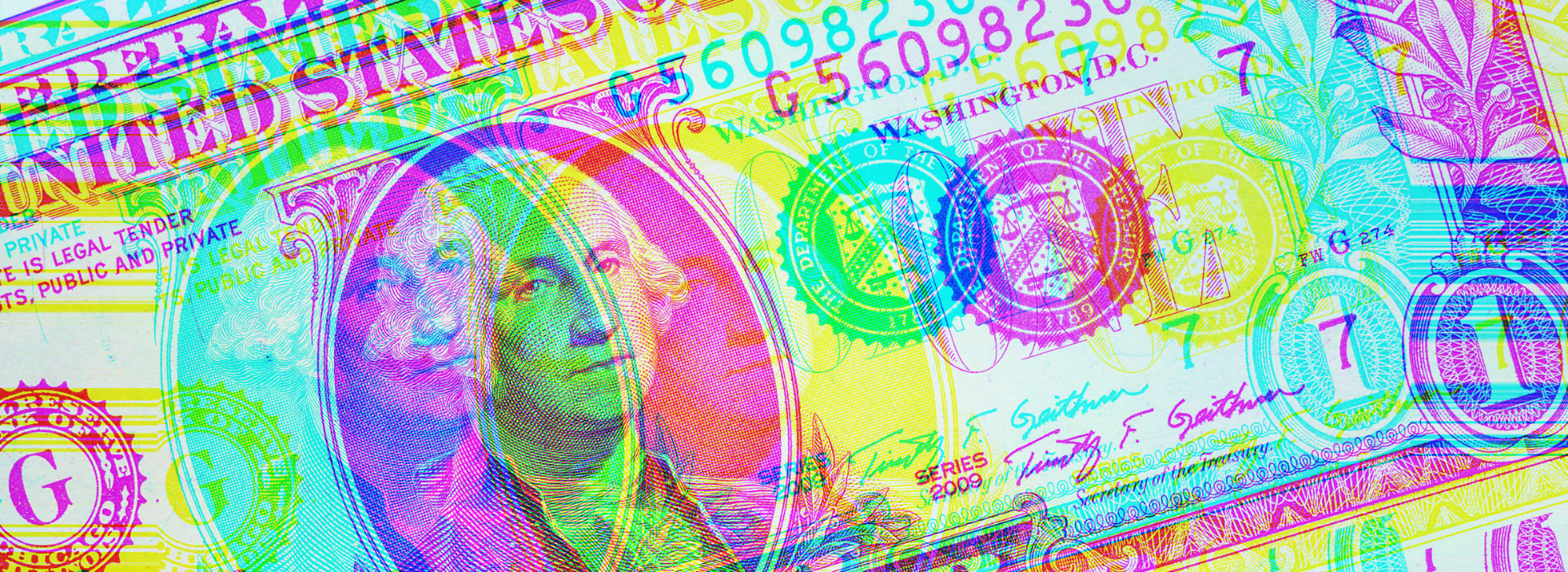Stablecoins explained: An FAQ on these digital assets
November 28, 2022 | By Jennifer Lorentz
If you’re unwilling to take a ride on the roller coaster of volatile cryptocurrencies like Bitcoin or Ether, stablecoins might be more your speed. As their name suggests, stablecoins are a type of digital asset built to maintain a stable value and serve as a bridge or “on-ramp” between traditional fiat and cryptocurrencies. Stablecoins could come to play a significant role in the future of digital commerce.
With the promise of enabling instant transactions, increased efficiency, and reduced costs, especially for cross-border payments, stablecoins may power a new wave of digitalization of financial services, including micropayments, payroll, escrow, overseas remittances and foreign exchange trading.
Although stablecoins have been circulating since 2014, growth has exploded over the past two years, with the supply increasing from $21 billion in September 2020 to $144 billion in September 2022, according to The Block Research. Increased interest in cryptocurrencies among retail and institutional investors has also attracted regulatory scrutiny. Many of the major global regulators are scrutinizing the practices of the crypto asset industry and actively considering applying new or existing regulatory principles to the industry.
There’s no denying that the worlds of crypto and traditional finance are colliding. However, it’s unlikely to be a simple path of progression. Here’s what you need to know:
1. not likely to give way or overturn; firmly fixed, steadfast.
2. not changing or fluctuating; unvarying.
What is a stablecoin?
A stablecoin is a type of digital asset issued by a private company and transferred through distributed ledger technology, also known as blockchain. Stablecoins were developed to facilitate crypto asset transactions and are generally pegged to a reference asset like the U.S. dollar.
So how are stablecoins different from other digital assets?
A digital asset is any of a variety of digital coins and tokens that represents a form of value or contractual rights. In addition to stablecoins, digital assets include private cryptocurrencies, central bank digital currencies, and non-fungible tokens, better known as NFTs.
The most popular cryptocurrencies, like Bitcoin, are known as free-floating crypto, which behave like a commodity and derive their value from the supply and market demand for the asset.
Since their value isn’t tied to an asset or algorithm, they often see large shifts in price. Central bank digital currencies are digital versions of paper money issued by a country’s central bank. NFTs are not currencies – they are usually digital goods that can take the form of digital art, collectibles or other kinds of unique digital representations.

The most popular cryptocurrencies, like Bitcoin, are known as free floating crypto. Since their value isn’t tied to an asset or algorithm, they often see large shifts in price.
How do stablecoins work?
Stablecoins work by pegging their market value to a stable asset. Because their value does not fluctuate as wildly as free-floating cryptocurrencies, they are more suited for use as a means of payment in everyday transactions and as store of value.
For instance, stablecoins are often utilized as a bridge between more volatile crypto assets and fiat currencies; crypto holders convert bitcoin or ether into a stablecoin and then to a fiat currency like the U.S. dollar, which can make it easier to spend their funds.
Stabilizing its value makes it more likely for stablecoins to be used in everyday commerce than cryptocurrencies, but it’s not that simple. One of the key outstanding issues for stablecoins centers around just how they maintain that so-called stable value — that is, the mechanisms by which these pegs are controlled and how the value is backed by real value.
Can a stablecoin be pegged to other assets?
Yes. Of the 200 or so stablecoins in circulation, most are pegged to the U.S. dollar, but there are others pegged to commodities like gold or oil, other crypto assets, or a basket of fiat currency or cryptocurrencies. Some stablecoin issuers use an algorithm to adjust the stablecoin’s supply based on demand to help maintain prices stability. Though the math is complex, essentially more coins are issued when the price goes up and burned when the price falls. Whether algorithmic or asset-backed, most stablecoin schemes have not been tested under a stress scenario. The recent collapse of the algorithmic stablecoin Terra demonstrates that stablecoins are not insulated from broader crypto market volatility.

A stablecoin ties the value down to an asset, like the U.S. dollar, to prevent the same price shifts seen in free-floating crypto.
Are stablecoins regulated?
The stablecoins in circulation today are not subject to clear regulation. The Terra collapse shows the need for regulation that defines stablecoins and what can qualify as a reference asset, and also puts in place clear consumer protections. Most major financial regulators are actively considering regulation for stablecoins, as well as the broader crypto asset ecosystem. However, until financial regulators clarify obligations, consumers should recognize the increased risks inherent in crypto.
So … is it actually stable?
Some regulators scoff at the term “stablecoin” for promoting the presumption that the assets’ values do not fluctuate, which has the potential to mislead consumers and investors. Rather, regulators refer to these cryptos as “so-called stablecoins,” because the stability of their value ultimately depends on the structure and design of their backing and governance model. For stablecoins to remain truly stable, the issuer must make an enforceable commitment to issue and buy back the stablecoin at the current value of the asset to which it is pegged, as well as to hold assets backing the stablecoins in circulation as collateral so that they can be redeemed at any time. The risk they could pose to consumers or to markets generally if they are not adequately collateralized is a major concern to regulators.
Collateralized … what’s that?
Collateralization is really important. It ensures that a stablecoin can be redeemed at any time. Collateralization means that a stablecoin issuer essentially has enough reserves set aside — U.S. dollars or gold, for example — in case a surge of its customers decide to redeem their stablecoins for fiat. It’s not unlike a bank having enough cash on hand in case of a bank run by its customers. Traditional banks are subject to stringent requirements for the amount of cash they must hold to meet customer redemption expectations. These same requirements have yet to be extended to the crypto industry. Recognizing the risks, some crypto firms have moved toward a voluntary “proof of reserves,” or “PoR,” but there is not yet an industry or government standard for doing this.
How are stablecoins regulated today?
Stablecoin regulation varies dramatically by country. Some prohibit the use of stablecoins for payments or prevent banks from issuing them, while others are proposing new regulations, from requiring issuers to have significant cash reserves or limiting issuance to licensed banks only.
Certainly the wait-and-see approach from regulators has dramatically changed. Don’t blink an eye or you’ll miss a new regulator weighing in or refreshing their position. As in the broader digital asset industry, regulation of stablecoins is extremely fragmented. Increasingly, digital assets are being regulated under existing banking, money transmission, payments and securities/futures regulations (U.S.), and many regulators have amended or are looking to amend existing rules to cover activities involving digital assets (U.S., U.K., Singapore, South Africa). In some circumstances, legislators have enacted new digital-asset-specific regulations (Switzerland, Gibraltar) or are looking to do so (EU).
Trying to navigate this jigsaw puzzle of regulation makes it incredibly challenging to innovate with legal certainty. Many markets, including the U.S., the U.K. and the EU, are ramping up their regulatory efforts, and the European Central Bank has already said that stablecoin issuers should be subject to “rigorous liquidity requirements” — essentially requiring a lot of cash reserves — and believes it should have veto power over stablecoins in the euro zone.
Wait, aren’t those same central banks considering issuing their own digital currencies?
Yes. Many central banks have been eyeing the rise of both free-floating cryptocurrencies and stablecoins with concern because most believe that, if left unregulated, stablecoins have the potential to destabilize a financial system and risk another worldwide recession like we experienced in 2008. If stablecoins aren’t properly regulated, there’s concern from governments that they could also enable illicit financial activity like money laundering and tax evasion.
Central bank digital currencies — which have been launched in the Caribbean and Nigeria and are being piloted in some of the world’s largest economies, including China, South Korea, Sweden and Saudi Arabia, according to the Atlantic Council's CBDC tracker – would be equivalent in value to a country’s legal tender (dollar bills, for example). They are designed to be used the same way — as a medium of exchange to buy and sell goods and services, just like private stablecoins. But unlike private stablecoins, CBDCs would be issued by a country’s central bank (like dollar bills) and would carry the same guarantee as paper currency.
Stablecoins just sound like the digital money I already use in my banking app. What’s the difference?
It’s a great question, and unfortunately the answer is not yet clear. In some ways, stablecoins could act exactly like electronic money today, to buy goods and services.
But there are a few major differences stablecoins could bring to the table, such as transparency — allowing users to see all transactions — and programmability, the ability to add new features or automation since stablecoins are software, not just a digitized form of paper money.
Regulators and legislators around the world are evaluating whether stablecoins fit into a preexisting money-like category or whether stablecoins represent a totally new type of money in need of a new regulatory framework.
Who are the major players in the stablecoin world?
In 2019, the world was carefully watching developments related to a stablecoin project proposed by Meta (Facebook at the time). Though Meta has since abandoned the project, it left behind a legacy of increased global interest among financial institutions and heightened regulatory scrutiny in the digital asset space.
The major stablecoins players are the issuers of Tether, USDC and Binance, the most popular stablecoins by total value. These issuers are all crypto-centric private companies. But some expect banks to launch their own stablecoins, perhaps new digital versions of today’s commercial deposits. There are already signs that this may be the case in Canada and Russia. But even if banks don’t issue their own stablecoins, it’s likely there will be increasing integration of stablecoin-related services within traditional banks via crypto-bank partnerships.
I’ve heard about concerns with Tether. What’s going on there?
Tether is by far the most popular stablecoin, with a market capitalization of more than $65 billion as of this writing. However, many news stories have come out about the lack of transparency of Tether and its parent company and whether Tether has in fact backed its stablecoin with real assets.
In response, Tether has made efforts to publicize audits of its reserves to prove it didn’t simply create new tokens out of thin air and has enough reserves in case people want to convert their Tether back to a fiat currency like the U.S. dollar.
Regardless, the situation highlights how new the stablecoin industry still is and why regulators are continuing to take a hard look at these assets and how they ultimately are backed. And this is prompting other issuers to increase transparency around the reserves backing their respective stablecoins.
This story was originally published Sept. 9, 2021. It was updated to address new regulatory movement, additional CBDC development, the collapse of Terra, and Meta's decision to wind down Diem.